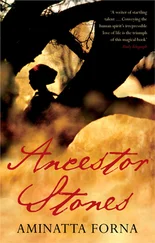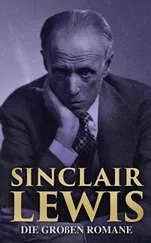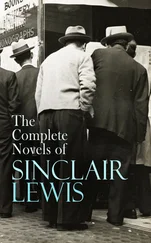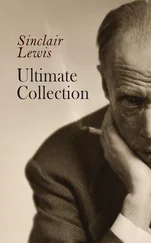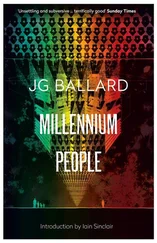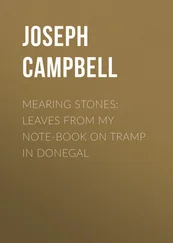Sinclair, digging deep, discovers (to his own satisfaction) the source of MacGregor’s ‘undoubted attachment to South America’. One of his ancestors, implicated in the disastrous attempt to colonise Darien in the late seventeenth century, ‘formed a marriage with a native Princess of the country, from which sprung our hero’. The conman’s unusually dark complexion was therefore explained: his taste for the primitive, the baroque, his inability to discriminate between truth and fiction.
I leant on the rail, breathing deeply. Hastings shimmered. The height — seven floors up — offered an illusion of omniscience (toy houses in blues, pinks, yellows): more distant than the stars and nearer than the eye. Why not attempt a Philip K. Dick? What was that video? Minority Report . Eyeball recognition. So change your eyes. Pluck them out, score replacements on the black market. Replenish sight.
Lines from Eliot drumming in my head all morning, occupying the gap left by the spiking of Mocatta’s amplifiers (thumpthumpthump). In Margate, as voyeur, the poet made his existential cri de coeur (or boast): ‘I can connect/Nothing with nothing.’ A bank clerk, under the paving stones of King William Street, looking up through green glass: the legs, the silk-sheathed legs, the clicking heels of typists. Tom Eliot the Nightstalker, his agonised peregrinations: doorways he can’t enter. Libido and lethargy: the hair-shirt, pornographic imaginings in the Cannon Street Hotel. Eliot’s breakdown and seaside convalescence were resolved: the publication of a masterwork. I couldn’t help myself, everything connected with everything. And Eliot was the messenger: Death by Water, The Hollow Men, Marina .
The conspiracy: to write and rewrite Joseph Conrad, Heart of Darkness, Nostromo . A voyage, backwards up the birth canal, tagged with epigraphs from the master. I will show you fear in a handful of dust .
One of the letters on my tray was from a woman who had laboured ‘for more than seven years’ making an artist’s book out of Nostromo . Squeezing ghosts of words, with infinite pain and care, until they become abstractions, wave patterns printed on tissue. ‘I am badly distressed,’ she wrote, ‘by my failure to get the work out to even the modest public.’
But the public is never modest. Nor the writers, the initiates: the possessed. Why should they be?
Burroughs cuts up Conrad. Graham Greene follows his lawless roads, his journeys without maps (Burroughs cuts him up too). Conradians all: Nostromoners. The name of the society, the brotherhood, it came to me as I stood on the balcony, watching Kaporal’s window, waiting to see what Ollie would do next, clutching my binoculars. (A telescope would be more use now.)
Nostromoner ( Nost-rom-on-er ) , n .: physicist of language, anonymous disciple of the writer Joseph Conrad (especially Nostromo). One who is dedicated to reworking the major texts and adapting the masks of Conrad’s characters, spurning novelty. Nothing to be written that is not written.
Grand Master: J.L. Borges.
The society never meets. No member must acknowledge another. Special interests: the alchemy of false memory, residues floating in the universal mindstream.
J.G. Ballard, who became a Nostromoner the moment he left Cambridge, was later expelled for announcing himself, to a well-connected television director (son of the Archbishop of Canterbury), on his arrival at Shanghai International Airport, with the words: ‘Hello, James. Mr Kurtz returns to the Heart of Darkness.’
The expulsion was meaningless (like the mad pronouncements of André Breton and Guy Debord). You can’t belong to a society that doesn’t exist. This is a covert (and imaginary) association whose membership is posthumous, invented by scholars hungry for tenure: forged documents, doctored photographs. Several of the more significant and prolific Nostromoners (Poe, Stevenson, De Quincey) preceded Conrad, contriving their imitations before the original was written or remembered. (All composition is memory.)
Forge/forget: the cannibalistic closeness of those words. If I lay the book, Mocatta’s gift, The Land That Never Was , across my knees (bony, Quixotic), and remove the pretty dustwrapper (eye-gum) … well then, by weight and shape, you have a laptop. Lift the front board, the lid. Words fall in vertical lines, bar-code rain. Patterns not symbols. Visible echoes. Pattern recognition: the art of the bibliophile, the Nostromoner. It costs nothing to join. Pick up a paperback in any flea market, a cheap Penguin from a Hastings charity shop. Start there. Work up to the hardback (with its megabyte).
Ballard, serene in Shepperton, started to give away secrets. Book as computer. His story. Title (‘re-memorised’ from Borges): ‘The Index’.
From abundant internal evidence it seems clear that the text printed below is the index to the unpublished and perhaps suppressed autobiography of a man who may well have been one of the most remarkable figures of the 20th century …
Who and what does he list? ‘Eliot, T.S., suppresses dedication of Four Quartets … collegium of Perfect Light Movement … Limited Editions Club… Oswald, Lee Harvey…Sex-change, rumoured operation … Telepathy, conducts experiments … Zanuck, Darryl F …’
Private libraries, arcane societies, Eliot. Ballard might as well have published an article in the Sunday Telegraph (he tried that but nobody noticed). You have to chase remaindered editions to bring the story to closure: a copy of A User’s Guide to the Millennium picked up in Greenwich, after a walk to the site of New Labour’s Dome (closed while uninterested parties argue over the small print of the asset-stripping contracts). Greenwich is a place of pilgrimage for Nostromoners: an anarchist’s bomb, lifted from newsprint, destroying the interpersonal dynamics of a fictional family: The Secret Agent .
Before you flip Ballard’s millennial computer, examine the photo-collage dustwrapper (icons and influences). Check out the suspects: Graham Greene (top right, very shifty) and (top left) Robert Duvall in Apocalypse Now (Coppola’s folly).
Conrad resists cinema: Orson Welles’s aborted trial run (pre- Kane ) at Heart of Darkness, the career suicide of Nicolas Roeg’s straight-to-oblivion version. Welles was a lifelong Nostromoner (three Conrad scripts, all unmade). ‘I don’t suppose there’s any novelist except Conrad who can be put directly on the screen,’ he told Peter Bogdanovich. He smuggled Heart of Darkness onto radio (nobody listened), then conceded: ‘There’s never been a Conrad movie, for the simple reason that nobody’s done it as written.’
Conrad, on a healthy retainer from the Lasky company, wrote a silent-screen adaptation of ‘Gaspar Ruiz’ ( Gaspar the Strong ). Lasky rejected the script, it was shelved. In company with his literary agent, J.B. Pinker, Conrad travelled to Canterbury to view Maurice Tourneur’s film of Victory. The Silver Treasure , a film based on Nostromo , was made in 1926, and is now lost. There are no known prints in any of the great collections. Orson Welles’s footage for Heart of Darkness can be found in the Lilly Library, Indiana University.
Affiliated Nostromoners who smuggled Conradian material into the cinema include: Alfred Hitchcock ( Sabotage ), William Wellman ( Dangerous Paradise ), Carol Reed ( Outcast of the Islands ), Andrzej Wajda ( The Shadow-Line ). Richard Brooks, Terence Young and David Lean are not Nostromoners. A fact confirmed by Lean, who died in his riverside conversion at Limehouse while labouring over his long-term obsession, a script based on Nostromo.
Читать дальше




